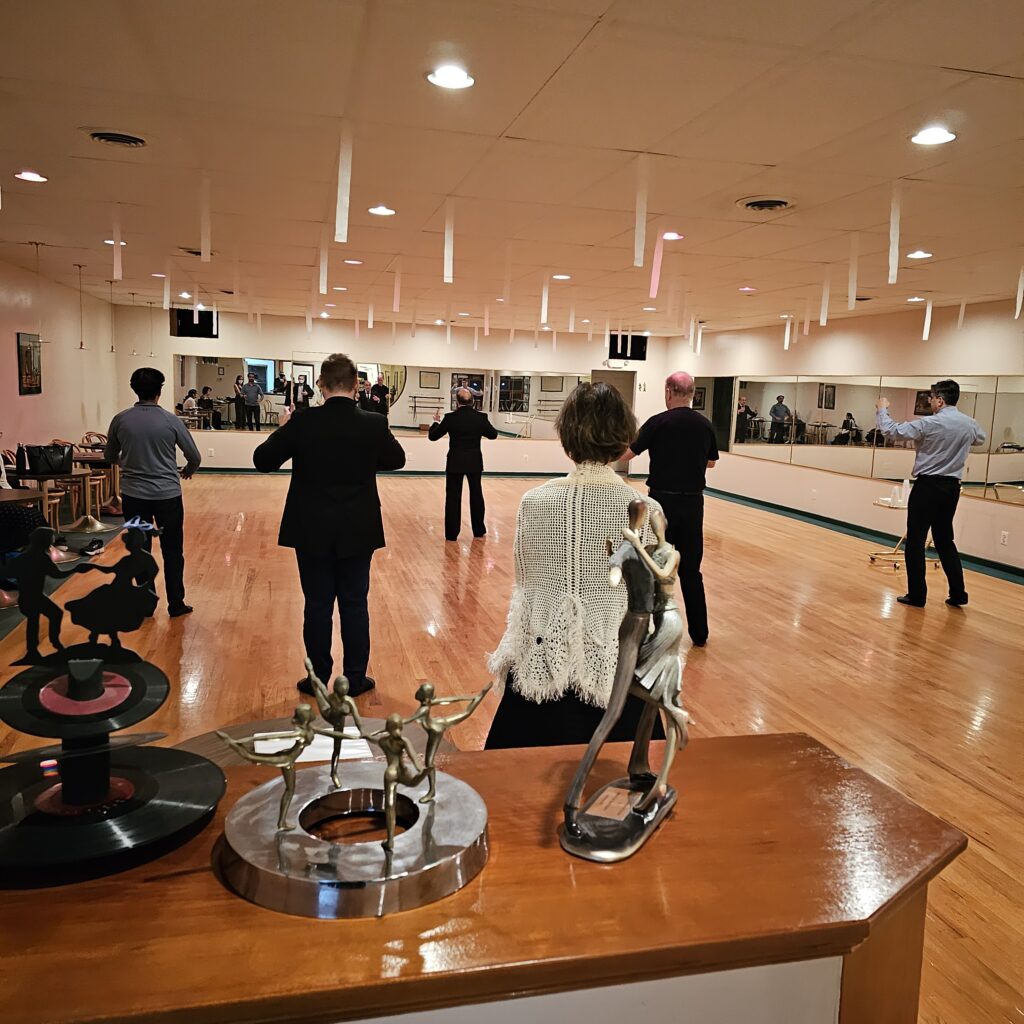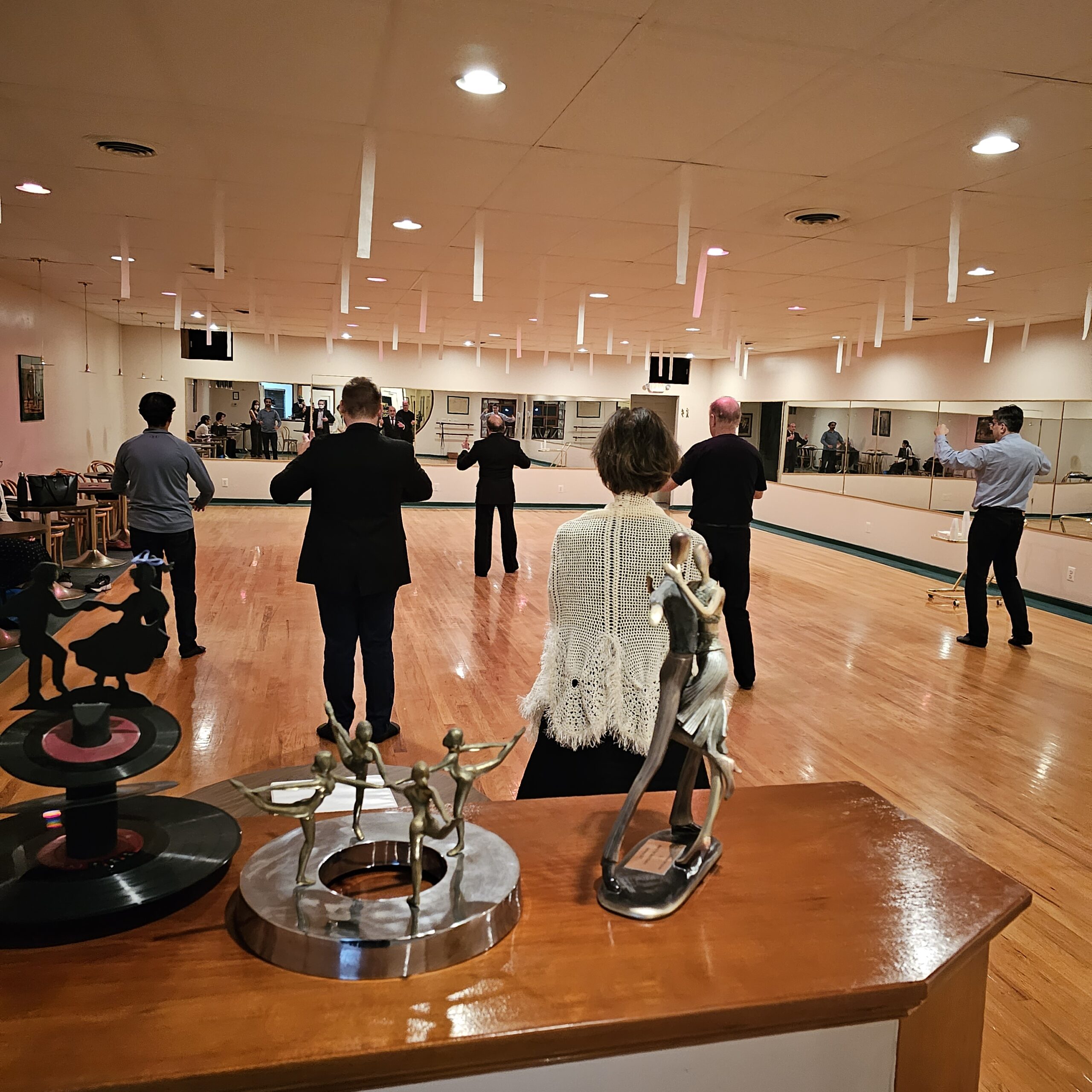After passing the Bronze One level, to get through the Bronze Two level might take you an additional nine months to a year. This depends on your frequency of lessons (both private and group). In addition, it depends on practicing at home and at the parties. I can’t stress the value of group classes and practice parties enough to strengthen your attributes of Bronze ballroom dancing.

Usually most students don’t realize how valuable group classes and parties are until after they have had some lessons. Then they realize how much further along with their attributes of Bronze ballroom dancing they would have been had they attended the group classes and parties all along.
The next level, Bronze Three, represents a smooth level. At this point the patterns are designed bring smoothness into your dancing. To get through this level usually takes an additional six to nine months. Here you’re introduced to patterns six through eight. From pattern eight to the end of the Bronze level, the patterns are also then to pave the way for a smooth transition into the Silver level. At this and the next level, the patterns are now much more complicated and elaborate.
The final level in Bronze focuses on continuity. This is not to be confused with the continuity styling and movements you will get introduced to in Fox Trot and Waltz in the Silver level.
Here at the Bronze Four level, the main focus is continuity. This means learning how and when to blend the patterns together.
By now you would have been taught about music phrasing. Most all patterns in most dances (except for Fox Trot, Disco, and Swing) are either four or eight measures. Most standard songs are eight measures per phrase. If you begin a pattern on a crescendo, then you will be phrasing. These make your dancing look and seem as if it was choreographed. This is how some of the best dancers can get on the floor and look like they are dancing a choreographed routine even though they are free-styling as they dance.

